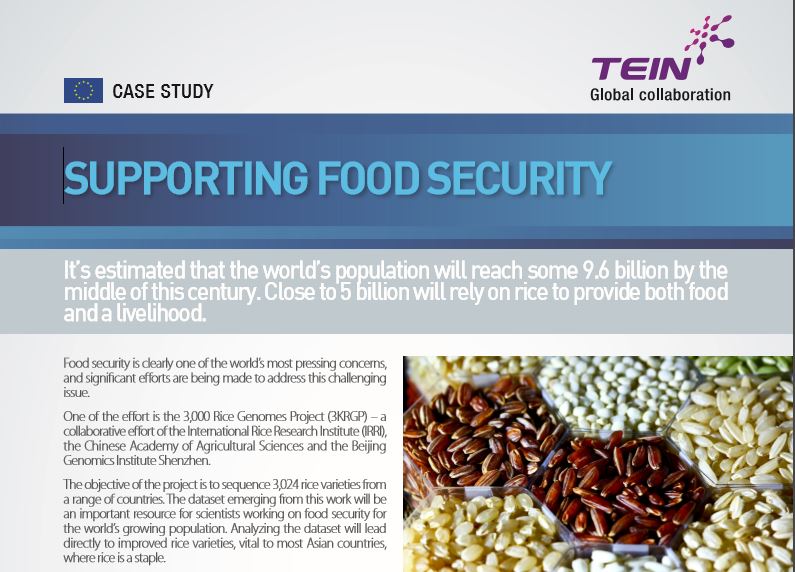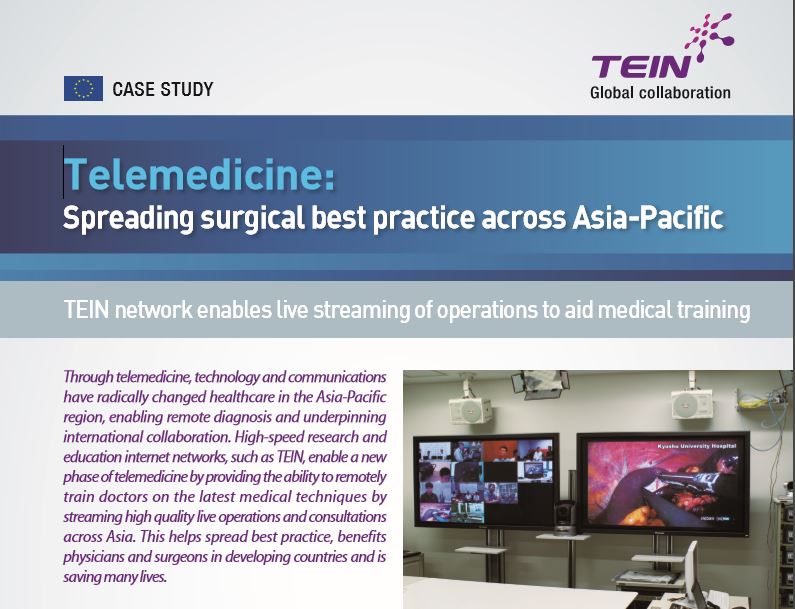Supporting Food Security
Click here to download this case study

Telemedicine: Helping Reduce Deaths from Cancer in Asia
Gastric cancer is the deadliest form of cancer in Asia It accounts for the deaths of some 28 men and 13 women per 100,000. In Japan, gastric cancer used to have a similar profile – number one in mortality, as well as in incidence. But now, although the incidence in Japan hasn’t changed much, mortality has fallen dramatically. The reason for this fall in mortality is simple: early diagnosis. Japan has a diagnosis rate of some 60% – the highest in the world. And that’s the result both of sophisticated imaging technology and of better education and training for young doctors. To put it another way: the reason for high mortality elsewhere in Asia is that the cancer is often diagnosed too late for effective medical intervention

Telemedicine: Spreading Surgical Best Practices Across Asia-Pacific
Through telemedicine, technology and communications have radically changed healthcare in the Asia-Pacific region, enabling remote diagnosis and underpinning international collaboration. High-speed research and education internet networks, such as TEIN, enable a new phase of telemedicine by providing the ability to remotely train doctors on the latest medical techniques by streaming high quality live operations and consultations across Asia. This helps spread best practice, benefits physicians and surgeons in developing countries and is saving many lives.
Traditionally telemedicine has been held back by the bandwidth requirements needed to transmit high-quality images between hospitals. In Asia, two groups that are working to overcome these issues are the TEMDEC project, led by telemedicine– pioneering Kyushu University Hospital in Japan and the Medical Tele-Collaboration among TEIN members (MTC) group, led by Seoul National University Bundang Hospital (SNUBH) in Korea. By combining the fast and stable network connections provided by TEIN and Digital Video Transport System (DVTS) equipment, which runs on a standard PC, TEMDEC enables the high-quality live streaming of surgery and consultations from operating theatres to remote classrooms. This allows medical professionals across the region to adopt complex clinical techniques, such as endoscopic surgery, that they can then use themselves to benefit local patients. The MTC project is running regular live surgery, tele education and teleconference sessions across Asia Pacific.

Cultural Collaboration: Dancing Around the World
The cyber-performance became a reality, thanks to some clever software, systematic co-ordination, and a series of linked high capacity information network. Among them is the Trans-Eurasia Information Network (TEIN) that connects scientists, researchers and academics across the Asia-Pacific region. The speed and reliability of TEIN and the other networks involved in the event allowed the highly precise synchronisation of the three completely separate data streams that made the performance together. High-speed research and education networks, such as TEIN, were originally developed as tools for scientists and academic institutions – to enable them to share data and co-operate in real time. However, the power of these networks lies also in enabling an entirely new way of collaborating on a wide variety of cultural projects – building bridges between different cultures.

Predicting the Climate: Protecting Lives, Protecting Livelihoods
As the world shrinks under the impact of globalisation, climate information is becoming an increasingly important element in social and economic decision making. Although the long-term impact of global warming on climate is still being debated, great variability of climate and extreme weather events are problems in the present, and pose real threats to human security, as well putting at risk billions of dollars of investment. In the past 20 years alone, there has been a severe drought in Indonesia (1997), prolonged flooding in Thailand (2010), and devastating typhoon Haiyan in the Philippines (2013). Reducing the risks posed by these disasters is a matter of urgency – and we understand better than ever how to achieve this goal. It needs investment in climate prediction services to make them widely available to the governments and agencies affected, so they are forewarned and able to prepare.

Particle Physics
One of the key LHC experiments is ALICE (A Large Ion Collider Experiment), a heavy-ion detector that is dedicated to studying the physics of strongly interacting matter, called quark-gluon plasma, at extreme energy densities. Eight Asian countries (Bangladesh, China, India, Indonesia, Japan, Korea, Pakistan, and Thailand) are participating in the ALICE collaboration.
Thailand is a full member of the ALICE collaboration with researchers actively involved in the Inner Tracking System (ITS) upgrade project for ALICE. The main goal of ITS is to improve the detection efficiency of ALICE, enabling it to cover currently inaccessible low transverse momentum particles, and thus gain sufficient measurements to properly study their behavior. ITS is scheduled to be completed before the next Large Hadron Collider Run 3 in the year 2020.
Thanks to the TEIN network, researchers will be able to work with colleagues at CERN, and with the ALICE Tier 1 center at the Global Science Experimental Data Hub Center (GSDC) at the Korea Institute of Science and Technology Information (KISTI).

